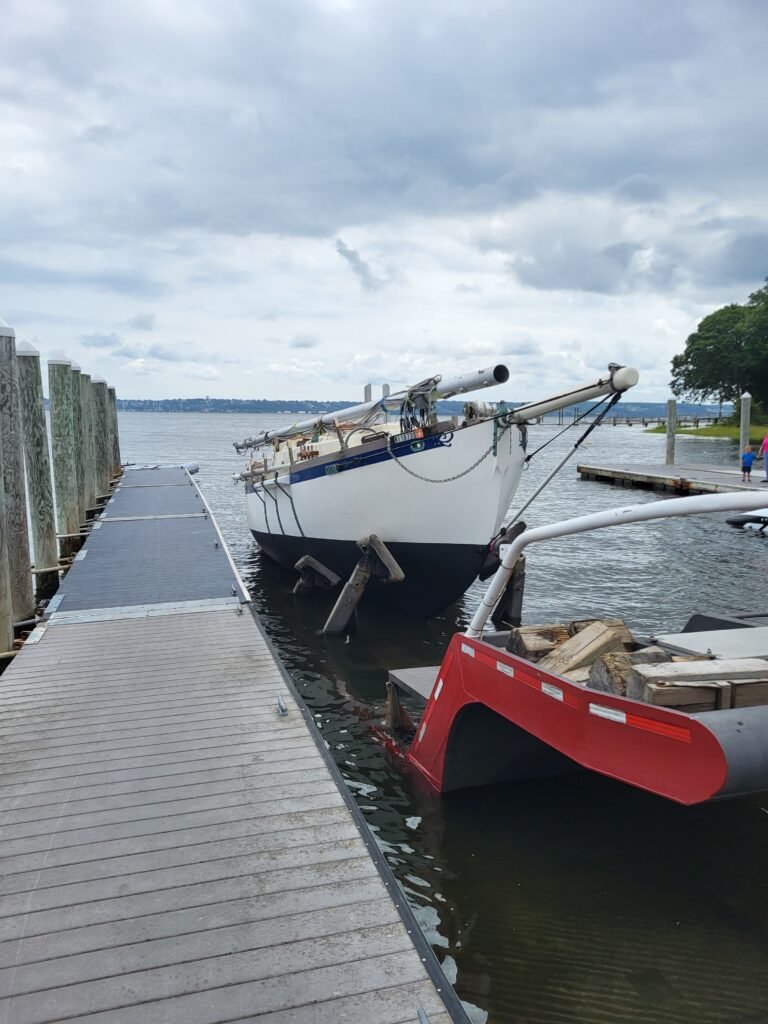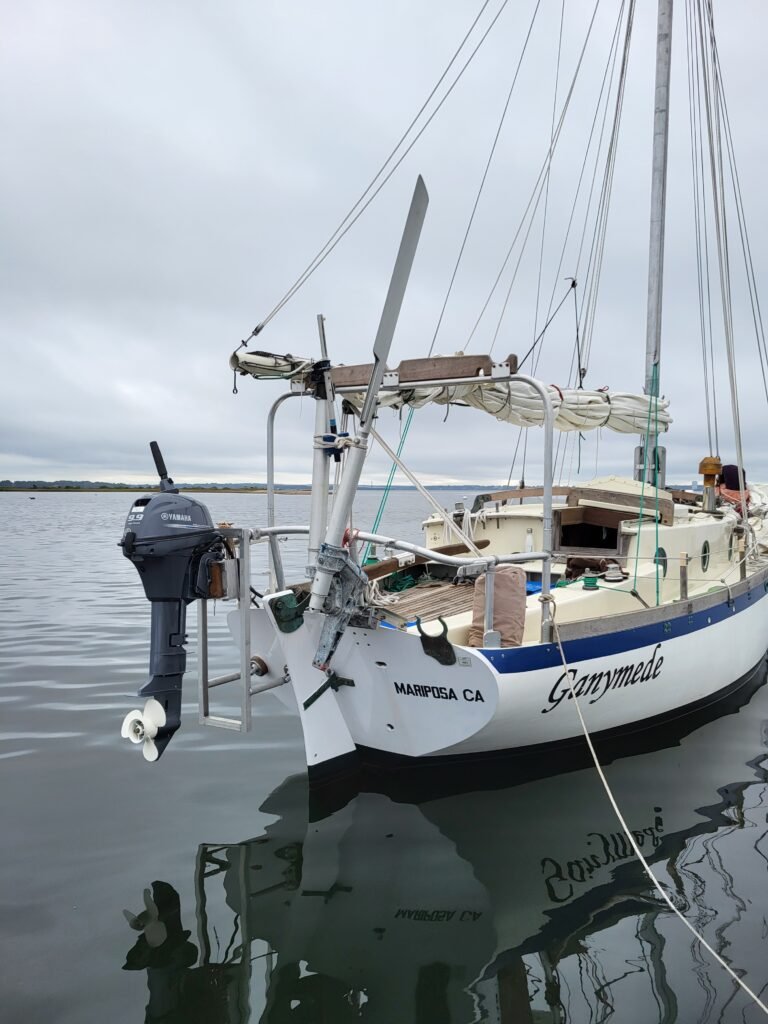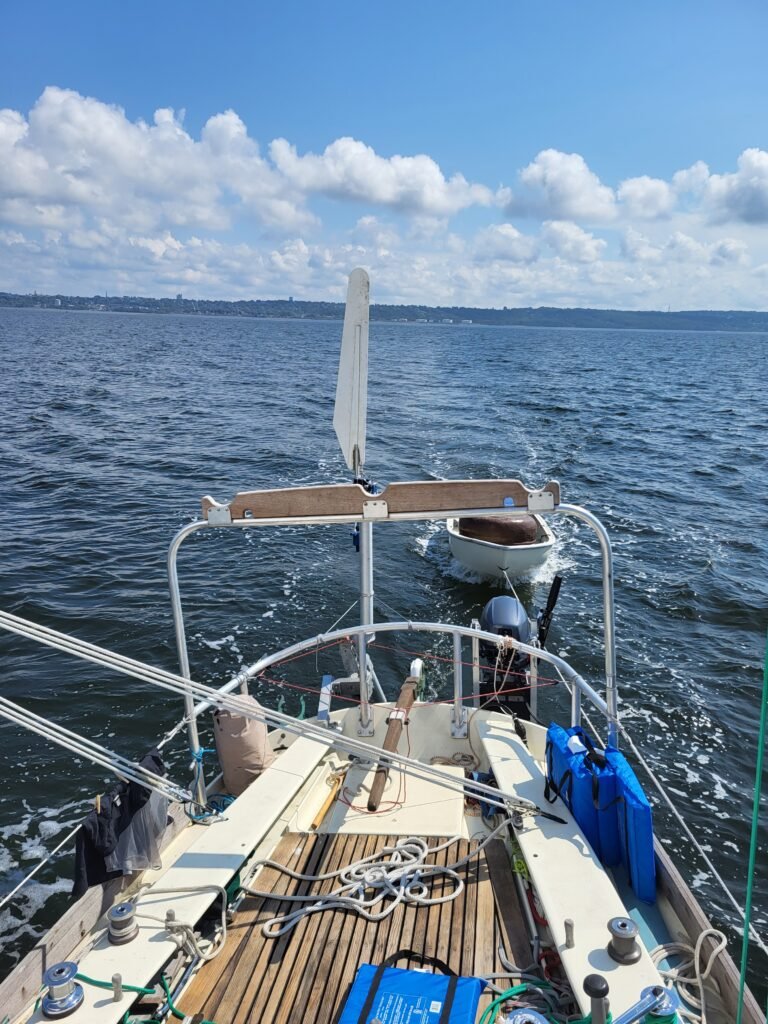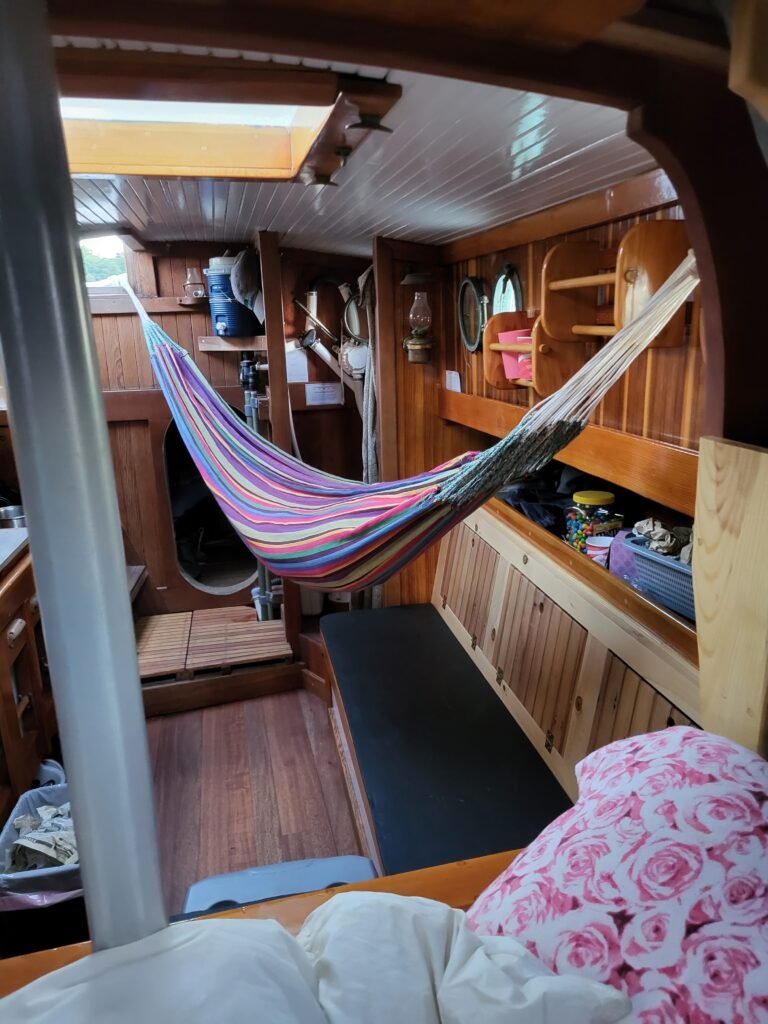

The surest way to get any project over with quickly, I’ve found, is to attack it with singleness of purpose, disallowing all but the most pressing distractions. That’s how we got Ganymede originally from bare hull to launched in just over three years, and cruising a couple months after that. Not so with our latest refit, which had her out almost as long as the original build, for far less work. You see, having cruised and sailed her for twelve years by then, we were distracted by other projects: a tiny schooner to fix up and sail while we did the refit; a trip through the Northwest Passage that involved a huge amount of preparation; a land house to finish; a business to run. Compared to those things, having three children and a full-time job while building the first time hardly count as distractions.
The refit—and of course it evolved into far more than we had imagined, once we started digging in—is done at last, and on a great day a few weeks ago, Ganymede was loaded onto an hydraulic trailer and trucked off to the launch ramp in Bristol where she was hauled three winters ago.
She sported the new stern rail I’d always wanted, with an experimental outboard bracket which holds the engine closer in and slides it up and down rather than needing to tilt. As if to rebel against the new bracket, the old 8-hp long-shaft high-thrust Yamaha outboard that formerly had always started after varying degrees of coaxing would not fire up, and we had to scramble to borrow a dinghy with an outboard to hip-tow Ganymede to her mooring.


It took a couple weeks to research and buy a new outboard, as the 8hp is no longer made, but there was a nice Yamaha 9.9hp that meets the specs. The bracket needs some minor fine tuning, but everything is working as it should, and we’re now able to motor around at will.
Also integrated with the stern rail is the mount for the Sailomat self-steering vane that we bought used many years ago, and fooled around with so much on our cruise of Newfoundland. Having finally worked out on that trip the optimal installation—it takes precise angles of bracket tilt and line leads—I made a better installation that didn’t involve wooden wedges and lashed-on struts. It’s still an awkward spidery attachment back there, but what servo-pendulum windvane isn’t? The several times we’ve been out, playing with adjustments and control line leads, she’s steered pretty good.
The new interior, though not done yet, is at least elegant and comfortable. It’s awkward to exist without a salon table, but being able to sling a hammock in the cabin is pretty fun. There’s still some matters of trim and cushions to take care of, but at least things are functional, and we’ve spent a night or two aboard. Soon we’ll fire up the wood stove and heat-darken the new stovepipe we had to get when the old one was found to have rusted through. It’ll be a chance to test-run the new copper shielding I installed around the stove. The old shielding wasn’t sufficient to keep nearby woodwork from scorching when the stove was burning hot, but now we should be able to load it up with confidence.


Another big item on the refit, a whole new gang of synthetic standing rigging, I’ll talk about more in detail in the next blog post. It deserves more words than I have left here, and more pictures than I could decently cram in. Suffice it for now that we’ve had Ganymede’s rail boiling along in the water, and all aloft rock-solid. There’s some tweaking to do here and there, but after fourteen years of sailing a homemade boat, I’ve realized that I’ll never be done tweaking, adjusting, and re-inventing. For now, I’m just glad the tweaking can be done with Ganymede in the water where she belongs, ready at any moment to sail out for an afternoon, an overnight, or as far away as we like.
